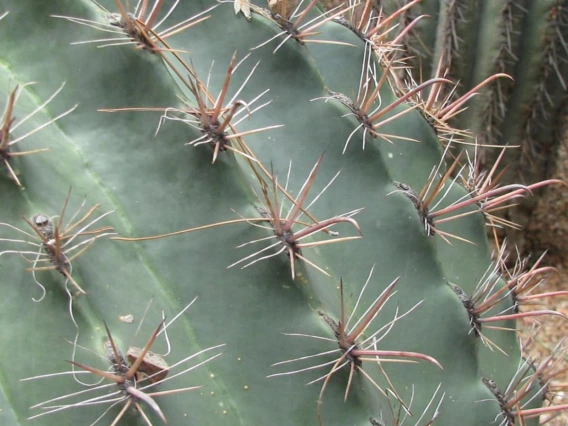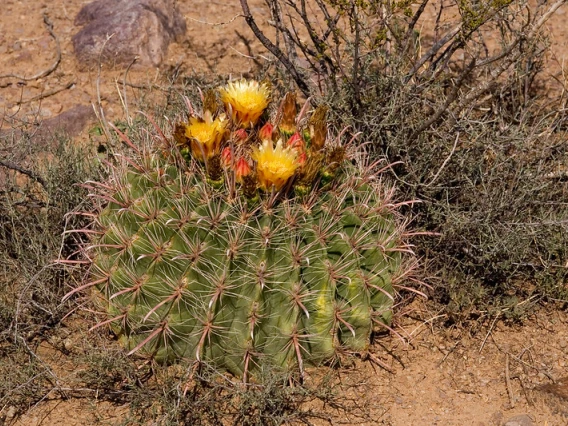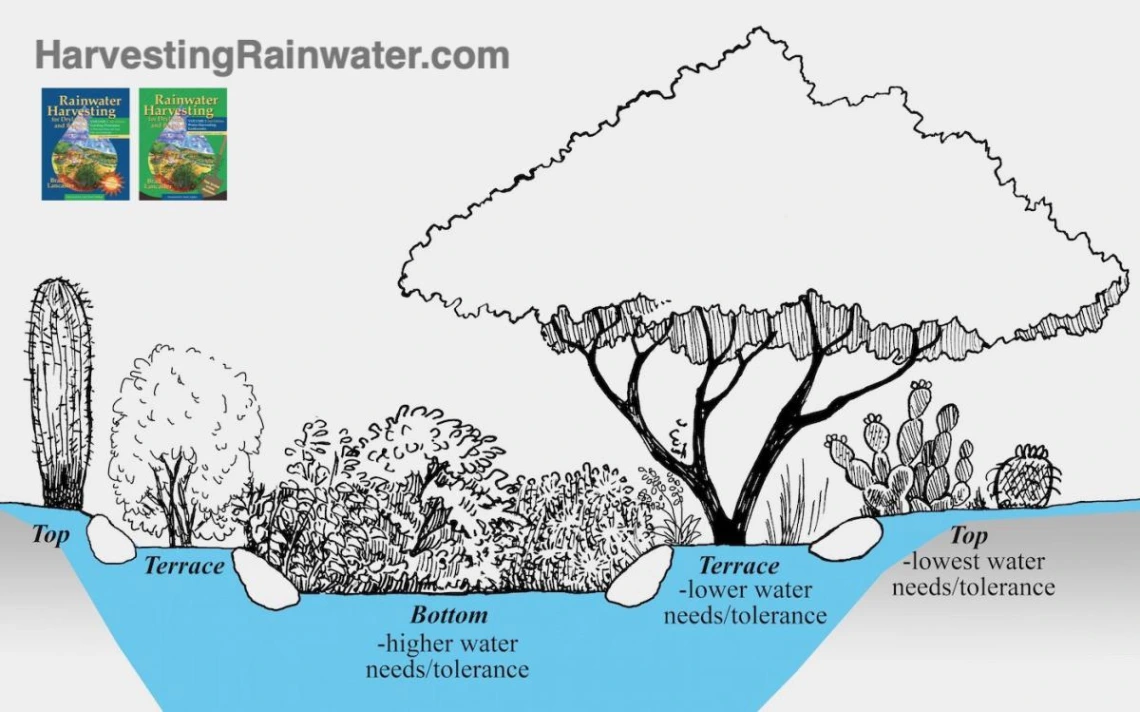


Botanical Name: Ferocactus wislizeni
Common Names:
English: Fishhook barrel cactus
Spanish: Biznaga de agua
O'odham: chiávul
Family: Cactaceae
Rain Garden Zone: F. wislizeni thrives in the top Rain Garden Zone, but may also grow well in the terrace Rain Garden Zone. (8)

Reproduced with permission from "Rainwater Harvesting for Drylands and Beyond" by Brad Lancaster, HarvestingRainwater.com
Flowering Season: July--September
Harvest Season: November--April
Harvest Techniques: Harvest ripe, undamaged fruits by using the strong tuft of the spent flower as a handle. Tongs may be used to harvest flower buds. Harvest fruit and flowers responsibly, making sure to leave enough for feeding animals and pollinators. (7)
Planting Season: Monsoon
Landscape Cultivation: F. wislizeni tolerates alkaline soils and may be propagated from seed. Plant barrel cactus in full sun to partial shade. Supplemental water is usually unnecessary for this species, although watering may be necessary during especially long periods of drought. Once established, there is no need for further maintenance (4).
Characteristics: F. wislizeni is a cylindrical cactus that may grow to 10 ft tall and 2 ft wide. This barrel cactus has 13 to 25 vertical ribs made up of pointed tubercles. Spines are yellow, red, or purplish and grow in groups of 12 to 30. Flowers are typically 2 inch long adn 3 inch wide and may be yellow, orange, or red (1). Flowers are cup-shaped and appear on the crown stem (2). The barrel-shaped fruits are fleshy and yellow. F. wislizeni can live up to 100 years (5).
Ecology: The fishhook barrel cactus fruits play an essential role in the mule deer's diet. In the winter, 42.5% of the mule deer's diet consists of barrel cactus fruits. When available, collared peccary will also consume the fruits of the barrel cactus (6). Additionally, bighorn sheep rely on barrel cactus for hydration during drought. (3)
Ethnobotany
Food:
Barrel cactus are highly favored for being the largest and most abundant perennial food plant that fruits during the fall and winter. Prime harvest of the fruits occur from November to February (3). The top of the barrel cactus may be lopped off and the internal pulp may be crushed down and eaten as a source of hydration (2). The fruits of the fishhook barrel cactus are described as tart and lemony, and are high in vitamins A and C. Fruits may be used fresh in beverages, salads, and chutneys; cooked down into syrups or jams; or frozen for later use. Seeds are high in protein and rich in oil (7).
Domestic Animals:
If spines are removed, cattle and rabbits will consume the fishhook barrel cactus (6).
Other:
As the common name suggests, the spines fo F. wislizeni were traditionally used as fishhooks (2). The barrel cactus frutis may be used to make a pigment or dye. Since the fruits are mucilaginous, seedless fruits may be soaked in water for 20 minutes and used as hair conditioner (7).
References:
- https://www.wildflower.org/plants/result.php?id_plant=FEWI
- https://swbiodiversity.org/seinet/taxa/index.php?taxon=3017&clid=3116
- Hodgson, W.C. (2001). Food Plants of the Sonoran Desert. Tucson: University of Arizona Press. Print.
- Jones, W. and Sacamano, C. (2000). Landscape Plants for Dry Regions. Tucson, AZ. Fisher Books LLC. Print
- https://www.nps.gov/sagu/learn/nature/upload/common-plants-of-saguaro-np.pdf
- https://www.fs.fed.us/database/feis/plants/cactus/ferwis/all.html
- Desert Harvesters. (2018). Eat mesquite and more: a cookbook for Sonoran desert foods and living. Tucson, AZ. RainSource Press.
- Lancaster, B. (2006) Rainwater harvesting for drylands and beyond. Tucson, AZ. RainSource Press.
For more information on this plant, see the Campus Arboretum species description pages.
Go to the next tour stop: pincushion cactus page or Return to the main Dunbar Spring tour page

